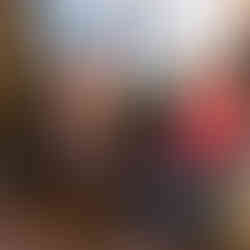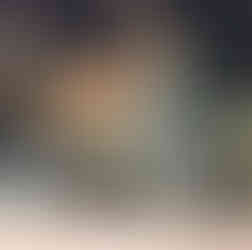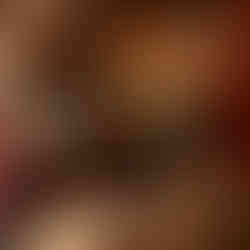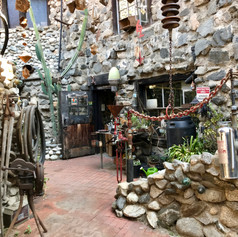FAMILY TOUR - RUBEL CASTLE
- Ron Hadfield
- Oct 2, 2017
- 7 min read
"Nothing will turn a man's home into a castle more quickly and effectively than a dachshund."
~Queen Victoria
"Stones in the road? I save every single one, and one day I'll build a castle."
~Fernando Pessoa
One of my early ideas when I created my Updated Bucket List for Year 77 was to take the family on a tour of several of the many unique and special attractions located in the Greater Los Angeles area. One such attraction is the Rubel Castle located in Glendora, California. Tracy read about the Rubel Castle in a Neighborhood Watch report she receives and Jenny mentioned that she had been in that neighborhood and had seen where it was (both Jenny and Tracy live in Glendora). The castle resides on 2 1/2 acres surrounded by a typical residential neighborhood. Michael Rubel and his friends constructed the castle out of river rock and concrete, but also out of scrap steel, bedsprings, coat hangers, bottles, and other "junk" that Rubel accumulated. It sounded like an interesting place to take the family on a tour. Making arrangements to tour the Ruble Castle is a real challenge, but I was finally able to get an appointment. All the family members couldn't make it on the day I had arranged, but Griffin and I, and my three favorite daughters, showed up at the Castle property at 9:45 am on Sunday, October 1st. The property is located within a neighborhood behind a 20-foot high cinder-block wall and a massive wood and steel gate.
Click Photo to Enlarge - Use Arrows for Next Photo
Michael Rubel: To fully appreciate a physical tour of the property you must know some of the history behind the man. Rubel's parents moved from New York to Glendora in 1936. Michael was born in 1940 and during his childhood they lived next to a junk yard. From the age of 9 to 12 he and his friends spent much of their time building forts from materials taken from the junk yard. He became obsessed with building forts, and while he was just nine years old they constructed a 3-story fort complete with a fire escape put in at the insistence of one of the mothers. During his teenage years he traveled extensively; to New England by private airplane, to Mexico by mule, to Europe by cruise ship, through Europe by hitch-hiking, across northern Africa by motorcycle, and many other places. In 1959, at the age of 19, Rubel purchased the 2 1/2 acre citrus orchard where Rubel Castle stands today. He said he wasn't good at, or interested in school and instead he tried various ways of making money on what he called the "Rubel Pharm" (including frog farming). But in the end, he wound up following his boyhood dream and compulsion of building a castle. The tour guide told us many stories of how Michael accumulated the materials and labor to build the buildings located on the property. You have to see the property to fully understand what it means when you are told that he would take anything anyone would give him and he and his friends would incorporate it into the walls and other parts of the structures on the property. I had two different reactions as we proceeded on the tour; one was that it was just one big junk yard; and the other was amazement that so many structures were constructed without plans, permits, etc. and are still standing today having lived through all the Southern California earthquakes. Michael Rubel is shown below in the year 2000 at the Castle.

The Property: The property was originally a citrus orchard and the buildings were constructed in an old 1,000,000 gallon concrete water reservoir. As you enter enter the property through the massive gate for the tour, you see an unbelievable collection of things. In addition to buildings I will mention, there is stuff (junk?) of every description laying around everywhere. Old machinery, tools, gears, wheels, rubble, debris, parts from this or that - a full range of things I can't describe. The buildings are of river rock brought in from San Gabriel Canyon, but with pieces of junk, bottles, etc. included periodically in the walls. The photos below show as you enter the property on your left is the entry to the castle, which has a large gate that operates like a drawbridge, next is one of the walls showing the stuff built into the wall, and there are several towers, one is called the Bee Tower since bee hives were kept in the top of the tower. Straight ahead are a number of buildings (that were identified later in the tour) and up high is a windmill. The tour guide is on our right, and near an old Sante Fe caboose which is apparently still used as a guest house. As we walked behind the caboose we came to a graveyard, but one without graves. There are just headstones that were given to Rubel because they had not been used by the monument company and, of course, he would take anything anyone would give him. One headstone was labeled Michael Clarke Ruble, with his correct birth and death dates, and an inscription that read "Please move over! You're standing on my stomach." The last two photos are inside the castle showing the front end and the rear end of a motorcycle built into the wall.
Click Photo to Enlarge - Use Arrows for Next Photo
Two of the structures I thought most interesting, and that somewhat tied the man to the castle property for me, were the Bottle House and the Clock Tower. In 1960 Rubel began building the Bottle House where he lived for seven years. The first photo is from the outside (I don't know the measurements, but obviously very small) and the second photo from the inside with a good view of the effect of the bottles. There is a small sleeping area upstairs accessed by a ladder. The Clock Tower construction began in 1964 and is 74 feet high. The clock is powered by an 1890 Seth Thomas clockworks, keeping perfect time, and ringing a bell at specific times each day. The last photo shows clockworks at the base of the tower, which we watched operate during one of the bell ringings.
Click Photo to Enlarge - Use Arrows for Next Photo
There is a 200-foot long building that was originally a tin packing house. Ruble lived in the packing house prior to moving into the Bottle House. His mother used this place for entertaining and because of the popularity of her parties it became known as the Tin Palace. Below are a few photos that show how nicely it has been kept.
Click Photo to Enlarge - Use Arrows for Next Photo
And finally, I was taken by surprise when the tour guide told us that there were six residents that lived full-time on the property. There are three residences (apartments?) within the Castle and three in various places on the grounds. Obviously we were not able to see inside the residences to understand how well they were maintained or how modern the facilities were. The residents pay rent and that income, together with tour fees and donations allow the Glendora Historical Society to continue to operate the property.
Click Photo to Enlarge - Use Arrows for Next Photo
A Little History: This history was taken from the following website and may have some duplication with information I presented above from my tour: http://www.glendorahistoricalsociety.org/castle/
Rubel Castle (also known as Rubelia) was established in Glendora, California, by Michael Clarke Rubel, and is currently owned and operated by the Glendora Historical Society. It has been called "a San Gabriel Valley version of Watts Towers.” Rubel purchased a 2½ acre citrus orchard in 1959 and that is where the structure resides. He and his friends completed construction in 1986. Rubelia is considered the first major recycling project in the United States. The Castle was constructed partly out of concrete but also out of scrap steel, rocks, bedsprings, coat hangers, bottles, and other re-purposed materials that Rubel found.
Rubel’s mother Dorothy, one-time Greenwich Village Follies dancer, moved into the packing house with her son. At 200 feet long it was the perfect venue for her favorite hobby, which was holding parties. Well-dressed guests arrived weekly by the hundreds, strolling past old tractors, horses, poultry, buggies, and other gritty remains of the orchard, to arrive inside a tin fruit packing house transformed into a giant dance hall. Inside, surrounded by art and antique furniture remaining from Rubel ancestors, they mingled and danced to a small orchestra. It is said that Sally Rand, the silent screen actress and fan dancer, famous since the 1933 Chicago World's Fair, never missed Dorothy Rubel’s parties, which were so extravagant that the packing house became known as “The Tin Palace.” Other people of note who came to the Tin Palace in those days include Dwight Eisenhower, Bob Hope, Jack Benny, Angie Dickinson, and Alfred Hitchcock.
Though Rubel slept in one of the giant citrus refrigerators, the walls of thick cork were not sufficient sound insulation to allow him peace from his mother’s parties. Beginning in 1960, Rubel began building a small get-away house in the empty old 1,000,000 gallon concrete reservoir, using cement and discarded champagne bottles. The walls of the reservoir provided privacy and a noise barrier while he built the bottle house.
He began adding material to an existing metal water tower. With the encouragement and help of many friends and relations, the castle grew to be thousands of square feet with towers five stories high. Rubel and his associates built the structure without architectural plans, utilizing salvaged river rock, cement, steel, aluminum, telephone poles and wine bottles. Old motorcycles, tires, sand-filled rubber gloves, a camera, a golf club and a toaster are some of the items that protrude from the castle. In the middle of the property sit a 1940s-era Santa Fe caboose, as well as old trucks and tractors. There is also a cemetery with rejected marble tombstones (but no graves).



















































Comments